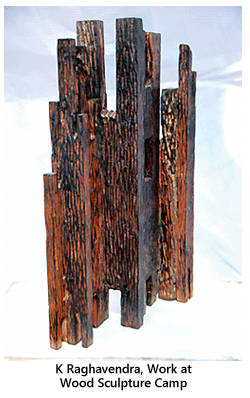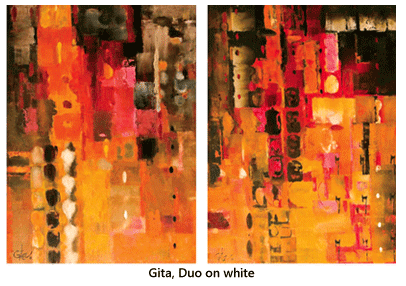- Prelude
- Editorial
- A Conversation with Sheela Gowda
- The DIY Artist with a Mission
- Discovering Novel Horizons
- A Conversation with Raqs Media Collective
- Manjunath Kamath
- Jitish Kallat- the Alchemist
- The Artist and the Dangers of the Everyday: Medium, Perception and Meaning in Shilpa Gupta's work
- An Attitude for the Indian New Media
- Weave a Dream-Theme Over Air or a Medium like Ether
- Installation in Perspective: Two Outdoor Projects
- Towards The Future: New Media Practice at Kala Bhavana
- Workshop @ Facebook
- Desire Machine: Creating Their Own Moments…
- Typography: The Art of Playing with Words
- Legend of a Maverick
- Dunhill-Namiki
- The Period of Transition: William and Mary Style
- The Beauty of Stone
- Nero's Guests: Voicing Protest Against Peasant's Suicides
- Patrons and Artists
- The Dragon Masters
- What Happened and What's Forthcoming
- Art Chennai
- Art Events Kolkata
- Winds of Change
- Art Bengaluru
- Mumbai Art Sighting
- Musings from Chennai
- In the News
- Previews
- Ascending Energy, Merging Forms: Works by Satish Gujral
- Re-visiting the Root
- The Presence of Past a New Media Workshop
- Taue Project
ART news & views
Musings from Chennai
Volume: 3 Issue No: 15 Month: 4 Year: 2011
February – March 2011
by Vaishnavi Ramanathan
Chennai is now eagerly awaiting Art Chennai, the Chennai version of the Art Summit. In the meantime, many art events ranging from the Regional Art Week to Women's day celebrations took place in the city.

The Regional Art Week organised by Lalit Kala Akademi in collaboration with Kalakshetra Foundation, Cholamandal Artist's Village and DakshinaChitra was held between 21st and 28th February, 2011. The Art Week included woodcarving, painting, ceramics, graphics and new media camps in which artists from different parts of the country participated. The artists who participated in the woodcarving camp held at DakshinaChitra were RS Sham Sundar, K Narayanankutty, K Raghavendra, Rajendra Dhavalay, M Segar and V Yuvaraj. However the most striking work produced in connection with the camp was R Solomon's sculpture of a crab in which the artist brought out the raw quality of the wood through bold chisel marks and contrasting application of varnish. Cholamandal Artists' Village hosted a painting camp in which artists Pandurang Deoghare, Jayavanth, Razia Tony, Pradeep Naik, Suresh Panicker and Thirumala Thirupathi participated. While artists like Suresh Panicker used the lush vegetation of his homestate Kerala as an inspiration, Hyderabad based artist Thirumala Thirupathi reacted to Tamil Nadu's politics and politicians by using currency motifs to focus on the 3G scam. As a new addition this year, Lalit Kala Akademi hosted a New Media camp along with a graphics camp while Kalakshetra Foundation, which also offers courses in the visual arts, held a ceramics camp.
Art world held a solo show of senior Cholamandal artist S Nandagopal. While the artist continues to work with found object to create frontal sculptures, the current works are smaller in scale compared to his earlier works. While in some cases, this scale made the works look less impressive than his previous works, it imbued the works with a certain lightness. This was especially complemented by the artist's usage of the round ladle which became the pivot on which other forms were balanced. The sculpture Fish which consisted of several delicately balanced ladles with a fish atop had a minimal appeal that also evoked the feel of a mobile sculpture. The titles of the works were also quirky such as Two heads and a wheel and so on. An interesting element in the exhibition was the inclusion of preliminary sketches by the artist thereby showing the way the work has evolved.
Chennai artist Santhanam who is popularly known as 'Door Santhanam' because the door is the central element in his work justified his name by engaging with doors even in his recent solo show (Re)creating Authenticity. The canvases painted in bright colours evoked the feel of a small town where life is changing at a fast pace, with these doors acting as gateways to glimpse at another way of life. But like the doorways which are remnants of an older way of life and can now be found mostly in antique shops (from where even the artist too might have bought them), people too no longer live in the houses that are visible through these doorways,  while only their presence survives in the peeling posters and bills stuck on the walls.
while only their presence survives in the peeling posters and bills stuck on the walls.
Cholamandal Artists' Village presented Asma Menon's works as part of its Artist of the Month initiative. Echoing the title of the exhibition Absence and Presence of Colour, the exhibition consisted of etchings as well as mixed media works done in a multitude of colours. Her approach to work was very inclusive as it used a variety of materials such as mirrors, coloured stones, bits of paper etc. while drawing from the world of mythology and the world of birds and animals. While the contrast between her etchings and her 'paintings' was stark it was evident that both shared a common aesthetic where the thick lines and dense tonal values of her etching masqueraded as the colour and other materials that she uses in her paintings. Many works from the show continued as an exhibition as part of DakshinaChitra's Women's Day celebration.
The Hindu, as part of its Women's day celebration collaborated with the city's art galleries to present a series of exhibitions by women artists. While this initiative was an opportunity to see the works of many artists, including 'male artists' (incidentally, a term that is seldom used), who engage with the 'feminine' in their works would have made the exhibition narrative more layered.
Gallery Sri Parvati presented Paint and Perspectives- Women and their work, an exhibition by women artists most of whom were from Chennai and nearby regions. Though the exhibition consisted of a mix of figurative and abstract works, a large percentage of the works were abstract. Vipta Kapadia's works consisted of finely textured abstract canvases painted in sober greys and greens. In contrast were Gita's vibrant yet soothing semi-abstracts inspired by music and dance where the warm colours coupled with the blurred edges of the form created the weathered feel of an ancient mural. Kirti Chandak's After Head Bath made interesting use of the circular frame to evoke the swirling effect of hair when submerged in water. Water was an element that was also used by Razia Tony and Premalatha Seshadri, where the former created a meditative feel by representing a Buddha face amidst a pool of lotuses while the latter divided the canvas into square areas filled with the wavy lines of water. One of the only sculptures featured in the show was Nupur Chatterjee's work of a girl reading a book with a pot of stones and a crow next to it. While an interesting dialogue was created between the expectant crow perhaps waiting for the water in the pot to rise up, as it does in the well-known children's story  and the girl unaware of its presence, the only note of discord was the multicoloured earrings and chains that were strewn near the girl's feet. The other artists who exhibited in the show were Sharmila Mohandas, Bharati Singh, Kavita Prasad etc.
and the girl unaware of its presence, the only note of discord was the multicoloured earrings and chains that were strewn near the girl's feet. The other artists who exhibited in the show were Sharmila Mohandas, Bharati Singh, Kavita Prasad etc.
Gallery Sumukha presented the works of Parvathi Nayar, Priti Vadakkath, Jaishri Abichandani, Sanjana, Vidya Kamat, Lakshmi Srinath etc as part of its Women's day celebration. Priti Vadakkath's large watercolours of people behind barbed fences created a sense of fragility with the barbed wires cutting across the thin wash of paint to create a boundary between 'them' and 'us' and also between the image and the viewer. Parvathi Nayar's graphite works revealed a sensitive handling of the medium where the unbelievably fine textures she created complemented the 'otherworldly' planets that she depicted. Vidya Kamat's work consisted of skulls arranged in spirals and circular designs that looked like close-ups of organic forms thus speaking of regeneration.
Lalit Kala Akademi presented Gender Bender, an exhibition featuring the works of women artists from across the country. The concerns that these artists explored was varied ranging from political to personal narratives. Prakrit Arts presented Kamalini an exhibition in which works by Manisha Raju, Seema Kohli, Arpana Caur, Rini Dhumal etc was presented.
Image courtesy: Rekha VIjayshankar